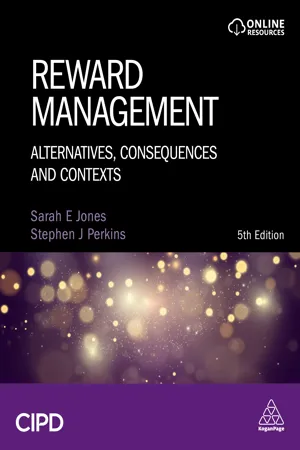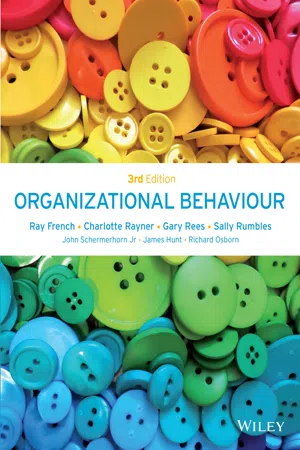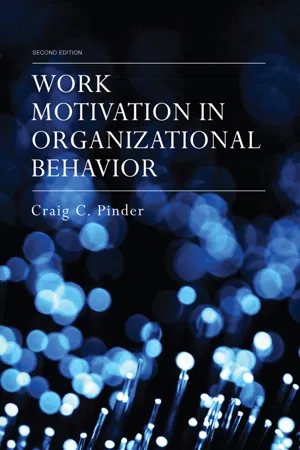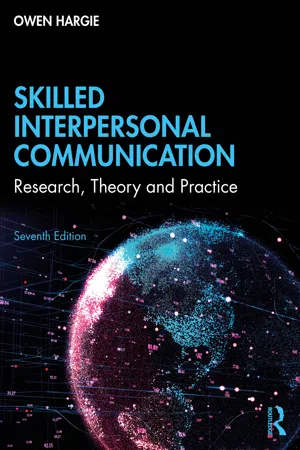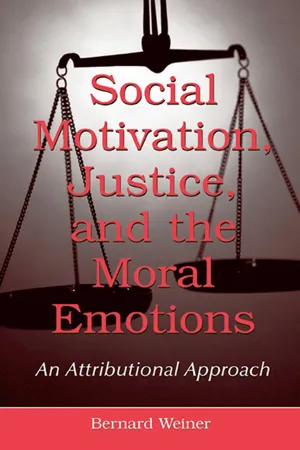Business
Reinforcement Theory
Reinforcement theory in business refers to the use of positive or negative consequences to strengthen or weaken behaviors within an organization. It is based on the idea that behavior that is rewarded or positively reinforced is more likely to be repeated, while behavior that is punished or negatively reinforced is less likely to occur in the future. This theory is often used in management and leadership to shape employee behavior and performance.
Written by Perlego with AI-assistance
Related key terms
7 Key excerpts on "Reinforcement Theory"
- eBook - ePub
Reward Management
Alternatives, Consequences and Contexts
- Sarah Jones, Stephen J Perkins(Authors)
- 2024(Publication Date)
- CIPD - Kogan Page(Publisher)
Reinforcement Theory (Skinner, 1953) extends notions of learned behaviour and locates it in social encounters. Under this conceptualisation, the managerial role becomes central in motivational encounters (‘social learning’). The assumption of this theory is that people seek positive reinforcement for their actions. Reinforcement Theory may in fact be viewed as less a motivational theory and more concerned with subjects’ responses to social encounters. Managers ‘educate’ employees in what is required to secure the desired reinforcement for their actions, and the task of management is to find out what will act to reinforce desired behaviour among subordinates and then monitor and appraise accordingly. Under this theory, differentiating between employees’ individual performance outcomes will reinforce the learned connection between action and reward. Under Reinforcement Theory, people’s mental state is ignored (Steers and Porter, 1987). The emphasis is on learning about how particular ways of ‘operating on the environment’ (another way of describing behaviour) lead to rewarding outcomes, reinforcing the aim for favourable rewards to be achieved and to avoid situations that carry penalties.An alternative, ‘cognitive’ approach to motivation theory – where it is assumed that employees are thinking individuals who make rational choices based on experience – offers a corrective to instinct and drive-based theory. Here, rather than ‘hedonism of the past’, grounded in habit, a form of ‘hedonism of the future’ is postulated. Employee behaviour may be perceived as purposeful and goal-directed, grounded in beliefs and expectations surrounding future events. Goal-setting theory (Locke et al, 1981) and expectancy theory - eBook - ePub
- Ray French, Charlotte Rayner, Gary Rees, Sally Rumbles, John R. Schermerhorn, Richard N. Osborn(Authors)
- 2016(Publication Date)
- Wiley(Publisher)
Managerial use of these approaches is not without criticism, however. For example, some reports on the ‘success’ of specific programmes involve isolated cases that have been analysed without the benefit of scientific research designs. It is hard to conclude definitively whether the observed results were caused by reinforcement dynamics. In fact, one could argue that improved performance might well have occurred only because of the goal setting involved – because specific performance goals were clarified and workers were individually held accountable for their accomplishment.Another major criticism rests with the potential value dilemmas associated with using reinforcement to influence human behaviour at work. For example, some critics may argue that the systematic use of reinforcement strategies leads to a demeaning and dehumanizing view of people that stunts individual growth and development. A related criticism is that managers abuse the power of their position and knowledge by exerting external control over individual behaviour. Advocates of the reinforcement approach attack the problem head on: they agree that behaviour modification involves the control of behaviour, but they also argue that behaviour control is part of every manager’s job. The real poser is how to ensure that manipulation is done in a positive and constructive fashion.The roots of Reinforcement Theory are embedded in the Scientific Management Approach, whereby employees are expected to carry out tasks in ways dictated to them. If the expectation is that managers control situations at work, based on the adoption of reward and punishment interventions, then these actions will continue, allowing little opportunity for employees to develop themselves and reflect upon their own working practices and performance. It is therefore unlikely that creativity and innovation will result, and the employee will await their next metaphorical electric shock or food pellet! - eBook - ePub
- Merilynn Van Der Wagen(Author)
- 2007(Publication Date)
- Routledge(Publisher)
4Reinforcement TheoryLearning is an enduring change in the mechanisms of behaviour involving specific stimuli and/or responses that result from prior experience with those or similar stimuli and responses…The only way to prove that the training experience is causing the behaviour change of interest is to experimentally vary the presence and absence of that experience. For this reason, learning can be investigated only with experimentation techniques.Domjan, 2003, p. 15Central themeBehaviour modification principles can be used to shape effective customer service behaviours. Reinforcement can occur in the form of extrinsic rewards provided by customers, supervisors or peers. Alternatively, reinforcement can occur in the form of self-reinforcement (intrinsic reward). Intermittent reinforcement creates the most sustainable behaviour. Performance standards (verbal coding of exemplary customer service behaviours) can contribute to the individual’s capacity for self-reinforcement.Training implications1 Describe learning outcomes in behavioural terms. 2 Use tangible and intangible rewards for reinforcement. 3 Use observational learning to build performance to the required standard. 4 While shaping behaviour ensure that each level of performance is achievable. 5 Explain and demonstrate what exemplary customer service looks like so that learners can become self-reinforcing when they achieve the performance standard. 6 Consolidate behaviour and transfer across a range of scenarios.IntroductionTraining plans usually have behavioural outcomes or objectives as the focal point. This is not to say that affective and cognitive outcomes are not achieved too, as these three domains seldom work in isolation. However, most trainers have been taught to respond to the question, ‘what will the trainee be able to do on completion of the training?’ These learning objectives usually commence with an action beginning. For example, on completion of training, the trainee will be able to: - eBook - ePub
- Craig C. Pinder(Author)
- 2014(Publication Date)
- Psychology Press(Publisher)
In balance, we can conclude that the differences between the two approaches are of more theoretical importance than they are of practical significance (Petrock & Gamboa, 1976). Both theories would propose that rewards (or reinforcers) be linked with performance (or desired behaviors). Both schools would suggest that reward/reinforcement contingencies feature outcomes that people desire or value. Finally, both acknowledge the importance of the context of behavior; the behaviorists, because they hold the antecedents and consequences of acts to be their cause, and the VIE theorists (e.g., Lawler, 1973), because they recognize that features of the work environment are important for structuring expectancy and instrumentality beliefs, which, in turn, result in intentions to act.A Glance Ahead
Our purpose to this point in the chapter has been to introduce some of the most important traditional principles of operant psychology, laying the foundation for a treatment of the application of these principles to the issues of work motivation and behavior. The purpose in the following sections will be to: (1) examine the general principles of behavior modification; then (2) present the specific application of the principles to organizational motivation and behavior – usually referred to as organizational behavior modification or applied behavior analysis; (3) examine social cognitive theory, one of the most valid approaches surveyed in this book; and finally (4), to explore in detail the principles and practices of self-management (or self-regulation), a currently popular focus of study in the organizational behavior literature.General Principles of Behavior Modification
On the basis of the diversity of views discussed in the foregoing section, it is not surprising that there is no universally agreed-upon definition of behavior modification. Nevertheless, for the sake of discussion, the following definition is borrowed from Kazdin (1978, p. ix) and adopted for use in this book: - eBook - ePub
- Gregory J. Madden, Derek D. Reed, Florence D. DiGennaro Reed(Authors)
- 2021(Publication Date)
- Wiley-Blackwell(Publisher)
Monitoring unethical behavior can reduce the chances that it will occur. Theories of Reinforcement Reinforcement is, on the one hand, a very simple process by which consequences increase the future probability of behavior. You can do a lot to improve the lives of others with this level of understanding. But underlying this simple description is an important question that we don’t yet have a good answer to: How does reinforcement work? There are at least two ways to approach answering this question. Both approaches have merit and complement each other (i.e., the strengths of one approach compensate for the weaknesses of the other, and vice versa). The first approach is to investigate the neurological events that occur when reinforcers are obtained. How do these events change the organism in a way that influences the future probability of operant behavior? If reinforcers influence future behavior, they must do this by changing the biology of the individual (e.g., synaptic patterns in the brain). This is an active area of research within behavioral neuroscience (Salamone et al., 2012), but it is beyond the scope of this text. Students who master the behavioral principles presented in this introductory course and who have an interest in the biology underlying these principles should pursue further study in behavioral neuroscience. The second approach to answering the how does reinforcement work question investigates this process at the level of the whole organism and how it interacts with its environment (without going into the neurological specifics that underlie the reinforcement process). Obviously, this will not further our understanding of the biological mechanisms underlying the process, but it will reveal in further detail how present behavior is influenced by past events. Behavioral neuroscientists will need these details when evaluating their hypotheses. For example, if their hypothesis does not correspond to the replicable behavioral data, then it is wrong - eBook - ePub
Skilled Interpersonal Communication
Research, Theory and Practice
- Owen Hargie(Author)
- 2021(Publication Date)
- Routledge(Publisher)
Reid and Parsons (2000 , p. 281):A variety of consequences have been demonstrated … to have reinforcing effects on desired staff performance including, for example, money, free meals, commercial trading stamps, discount coupons, and work duties, trips away from the work site, and special recognition ceremonies.However, as always, reinforcement is a two-way street and, in the workplace, rewardingness is bi-directional, as employees attempt to influence and shape the behaviour of managers. Hargie et al. (2004 , pp. 85, 86) illustrated how:Subordinates influence managers through rewards such as social approval (praise, nonverbal acknowledgment, etc.), and by their work rate and volume of output. Conversely they can punish managers by withdrawing verbal and nonverbal rewards and by reducing their work efforts.Finally, sports coaches who employ rewarding techniques have been found to be popular and have also been shown to enhance levels of skill and improve results (Smith and Smoll, 2007 ; Freeman et al., 2009 ). Furthermore, Justine and Howe (1998 ) reported that among adolescent female field hockey players, frequent praise from the coach was associated with greater perceptions of self-competence and satisfaction with both the coach and general team involvement.Behaviour and its consequences
Since Ivan Pavlov (1927 ), the eminent Russian physiologist, introduced the term, the concept of reinforcement has been the subject of much heated debate in psychology. One psychologist who was at the forefront of much of this was B.F. Skinner (1953 ). Skinner preferred the term ‘reinforcement’ to ‘reward’ due to the greater semantic precision which it afforded, together with its lack of mentalistic trappings. As such, a reinforcer, by definition, has the effect of increasing the probability of the preceding behaviour. The application of reinforcement procedures in keeping with Skinnerian principles is known as instrumental or operant conditioning. The central tenet of this process focuses on the ability of the consequences of behaviour to increase the probability of subsequent manifestations of that behaviour relative to some preconditioned level (Lieberman, 2012 - eBook - ePub
Social Motivation, Justice, and the Moral Emotions
An Attributional Approach
- Bernard Weiner(Author)
- 2006(Publication Date)
- Psychology Press(Publisher)
Reward and Punishment
T he important role of reward and punishment in the motivation process has been evident throughout the book, although it typically has been implicit rather than explicit. For example, achievement evaluation can be regarded as rewarding or punishing; helping another is a reward, whereas aggression can be considered a form of punishment; and transgression was discussed in the context of reward and punishment as sources of power. Even emotions directed at self (pride, guilt) and others (gratitude, anger) have reward and punishment value. Thus, I now turn to this topic and explicitly address the antecedents and consequences of reward and punishment from an attribution perspective.One of the most studied topics in psychology falls under the joint rubric of reward and punishment. This prevalence can be traced in part to (a) everyday observations that reward and punishment have evident effects on motivation and performance, and (b) the influence of behaviorism in psychology. It was logically reasoned from the behaviorist point of view and experimentally documented that reward increases the likelihood of a response, whereas punishment reduces the probability of a response from reoccurring. These principles or laws found their earliest expression in the writings of Thorndike (1911), who was a student of William James. Based on his observations of animal learning, Thorndike (1911) postulated his influential Law of Effect. The law states that when a stimulus–response sequence is followed by a “satisfying state of affairs,” the strength of that bond increases. On the other hand, when this association is followed by an “annoying state of affairs,” the strength of that bond or linkage is weakened. Thorndike’s Law of Effect captured a “hedonism of the past” in that positive and negative outcomes alter the likelihood of the preceding response, rather than pulling the organism to a desired state or a “hedonism of the future,” as expressed in Expectancy × Value theory.
Index pages curate the most relevant extracts from our library of academic textbooks. They’ve been created using an in-house natural language model (NLM), each adding context and meaning to key research topics.
